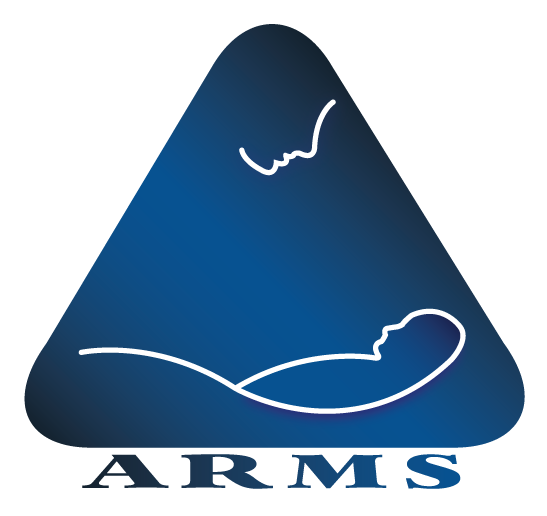Natural conception is often not easy, but these tips on how to get pregnant can increase the odds of pregnancy success
Getting pregnant can seem straightforward, yet it involves a complex interaction of biological processes and timing. For those trying to conceive, understanding these basics can make a significant difference in conception success.
Unfortunately, just one variation can disrupt the intricate series of events necessary for conception. These disruptive variations can be broken down into problems with three broad causes of infertility.
- The makeup of individual cells in each partner, meaning the oocyte, or egg, from the
woman and sperm from the man. - The journey the eggs and sperm need to make from their points of production to their meeting, which is most often in the fallopian tubes where fertilization occurs.
- The condition of the uterus, where a fertilized egg will implant as an embryo for pregnancy and grow.
Chance of getting pregnant naturally declines with age
Many people overestimate the likelihood of conceiving naturally, which is why infertility often isn’t diagnosed until a significant time has passed trying to conceive. A person’s age is a key factor, which is particularly true for women as egg quality and quantity naturally decline over time.
Women are born with a finite number of eggs, and as they age the timeline of their fertility changes. Not only does the number of eggs decrease, but the chances of an egg developing into a healthy embryo that can grow into a healthy fetus and result in live birth also lessens. This is most often due to an increase in genetic problems in the eggs with female age.
A woman’s chances of getting pregnant by age
In her 20s, a woman has a 20%-25% chance of getting pregnant each month, that age is typically when she is most fertile, with a high quantity of high-quality eggs.
By her 30s, the likelihood drops slightly to 15%-20% each month. After 35, however, fertility declines more sharply. Women in their 30s may want to consider ovarian reserve testing if planning for future pregnancy.
By age 39, a woman’s monthly chances of conception drops to 10% per menstrual cycle and the decrease accelerates so that by age 41 it drops to 5%, and by age 45 her chance is less than 1%. While pregnancy is still possible, the likelihood decreases considerably.
Related reading:
Learn about the ideal conditions for getting pregnant.
Understanding the menstrual cycle and ovulation
The menstrual cycle is at the core of conception. Typically, it lasts around 28 days, though it can vary. The cycle’s phases are menstruation, the follicular phase, ovulation and the luteal phase. Ovulation, occurring roughly midway through the cycle, is when an egg is released from an ovary, making it the prime time for conception. Without an ovulated mature egg present in the fallopian tubes for sperm to fertilize it, conception can’t happen.
Monitoring ovulation through methods like tracking basal body temperature, ovulation predictor kits and observing cervical mucus can help identify the most fertile time for the female to conceive, often called the fertile window. Ovulation predictor kits are much easier to utilize than the other methods.
Timing for the fertile window is essential
Sperm can live inside the female body for up to six days, while an egg only lasts 12-24 hours after ovulation. The American Society for Reproductive Medicine describes that fertile window as the 6-day time period ending with ovulation.
This means that timing intercourse for that period maximizes the chances of sperm meeting the egg. Since sperm can survive for six days in the fallopian tube, it is not necessary to have intercourse on the exact day of ovulation. Making sure that you have intercourse at least six days before ovulation is the key.
We recommend that couples engage in regular, unprotected intercourse every 2-3 days to improve their odds, especially during the fertile window.
Structural issues and conditions impeding fertilization
Structural issues in women
Women may have structural issues with their reproductive system that prevent conception or pregnancy. These can include an abnormal uterus, blocked fallopian tubes and conditions like polyps and uterine fibroids.
The woman’s uterus must also be receptive to hold and nurture the pregnancy. This is mostly a function of proper reproductive hormone levels. We can provide effective treatments to overcome such structural issues and conditions.
Structural issues in men
Men can have similar problems, such as structural issues preventing sperm from being ejaculated properly. Erectile dysfunction can also be an issue to overcome. We have treatments that can correct or work around such problems.
How to get pregnant: optimizing chances of conception
Applying this information on ovulation, tracking the fertile window and possible structural issues should give people a better chance at pregnancy success. Below is information on things individuals can do to improve their chances of natural conception.
Optimizing female egg health and menstrual cycle regularity
Simple steps like eating well, staying active and managing stress can support overall health and help maintain a regular menstrual cycle. Regular cycles are a good sign of ovulatory health, which is essential for conception.
Women can also consider taking prenatal vitamins even before pregnancy, as they contain folic acid, which is crucial for preventing neural tube defects and supporting early embryo development. Consulting a healthcare provider before starting any supplement is advisable, especially if there are underlying health concerns.
Steps toward more healthy sperm
Male fertility can be affected by age, though not as much as for women. Lifestyle and environmental factors also play a role in sperm quality. Healthy sperm should have good motility (movement), morphology (shape) and a sufficient count.
Men can improve sperm health by:
- Avoiding excessive heat, such as hot tubs, saunas or prolonged sitting with electronics on the lap, which can negatively affect sperm production.
- Eating a nutritious diet: Foods rich in vitamins C, E and zinc help maintain healthy sperm production.
- Staying active: Regular exercise supports testosterone levels but should be balanced to avoid extremes.
- Reducing exposure to toxins: Limiting contact with harmful chemicals, such as pesticides and heavy metals, is also beneficial for sperm quality.
- Avoid any form of testosterone or anabolic steroids.
Lifestyle considerations for both partners
Certain lifestyle choices can impact fertility. Here are some steps both partners can take to boost reproductive health:
- Maintain a healthy weight: Being underweight or overweight can disrupt hormone balance, affecting ovulation and sperm quality.
- Eat a balanced diet: Nutrient-rich foods support overall health, including reproductive health. Foods high in antioxidants, folic acid, and omega-3 fatty acids are particularly beneficial.
- Exercise moderately: While exercise is good for health, excessive physical activity can sometimes negatively affect ovulation in women and reduce testosterone levels in men.
- Avoid tobacco and limit alcohol: Smoking can harm both egg and sperm health, and excessive alcohol intake can interfere with hormone production.
- Reduce stress: While the relationship between stress and fertility is still being studied, high stress levels can impact hormone levels and lead to irregular ovulation cycles. It can also affect the sex drive of partners, reducing the chances of pregnancy.
When to consult a doctor for possible infertility treatments
Most couples conceive within a year of trying, but if pregnancy hasn’t occurred after 12 months (or six months if the woman is over 35), consulting a fertility specialist is recommended. A fertility evaluation can help identify any underlying issues and provide guidance on the best steps forward.
For couples facing challenges, a variety of fertility treatments are available. These may include medications to stimulate ovulation, intrauterine insemination (IUI) or in vitro fertilization (IVF). Advances in reproductive medicine mean that even complex fertility issues can often be addressed.
When in doubt about fertility, it is always best to seek help as soon as possible. Letting time pass frequently just increases the problem.
Questions?
Call us at (602) 351-5327 or schedule an appointment below. Let’s talk.

